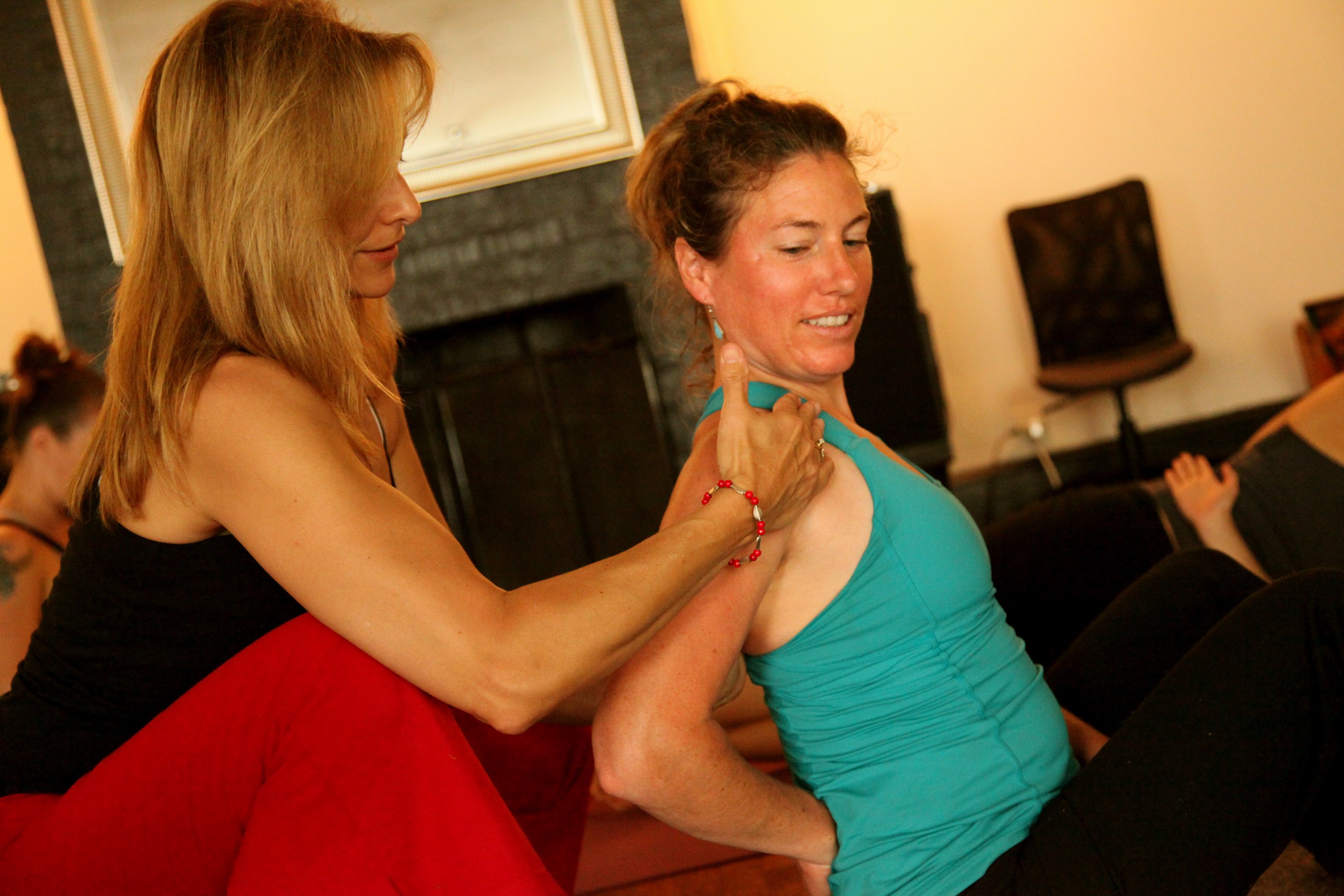Yoga as Rehabilitation: It’s Not Just the Poses!

By: Chrys Kub, PT, C-IAYT
First, I am a physical therapist. That however, does not define my practice with my patients as only addressing the physical body. Our approach to healthcare has evolved greatly and we know to have any success at all, we must treat the person, not the disease or symptoms. My first experience with yoga was in a group class back in 1999. I remember feeling like it was very familiar to physical therapy and wondering if I could apply some of the yoga poses to my work with neurological patients. Although I did start with using poses to help my patients with strength and flexibility, over the past 19 years I have discovered the tools of yoga that can offer much more to my patients on many levels, not just the physical. Through mentorship with a leading physical therapist in the integrative yoga field, Dr. Matthew Taylor PT, and a blend of yoga studies and training in the personal practice and therapeutic applications of yoga, my approach and practice of physical therapy was literally transformed. In case you have been living under a rock the past twenty years, yoga is now mainstream! Research is now supporting the use of yoga as a tool to help persons with chronic health issues. (Schmidd AA, 2015) (Groessll EJ, 2015) Functional Medicine, wellness and preventative healthcare is not just the future, it is happening NOW. If you want to be on the cutting edge of healthcare and rehabilitation, instead of just learning dry needling, manual therapy and myofascial release, consider learning more about yoga as rehabilitation to improve your outcomes and transform how you practice.
One of the most challenging things about modern physical therapy practice has been the decrease in time with the patient. While our time with our patients may now be limited due to insurance constraints, how we interact with them is under our control. In the end, what we do is not as important as how we do it. The key to our success as a therapist is “relationship”. If you create a relationship with your patient, all the rest will take care of itself. Matthew Sanford , Iyengar Yoga Instructor, person with paraplegia.
At this point you are probably thinking, how in the world can having my patient practice a downward dog pose do anything more than stretch his hamstrings? The first answer is: Yoga isn’t what you think it is! (Taylor, 2018 ) Here are just a few of the tools you can incorporate with your patients.
- Breathing: We know that abnormal breathing patterns are a part of or contribute to our patient’s symptoms. Learning proper breathing (described as Transversus Abdominus thoracodiaphragmatic breath TATD) can improve dynamic stability for movement, postural awareness, optimal arousal state, mental health and social engagement. (Garner, 2016)
- Mindfulness: We now know that pain is an output of our nervous system, not always a sign of tissue damage. It has been repeatedly found that through mindfulness meditation practices, one can learn to attenuate pain. ( (Taylor, 2018 ): (Zeidan)) Learning how to help our patients practice simple mindfulness techniques can assist them to mitigate their pain symptoms so they can practice the movements (physical therapy) and attain the function they desire.
- Movement: Yoga poses are movement with awareness. Through application of techniques such as Feldenkrais Method we know mindful movement is effective for rehabilitation. (Patricia Buchanan, 2013) Yoga postures incorporate breathing and mindful movement in addition to strength and flexibility training. This allows us to help our patients on many levels at once and motivates them to continue after their discharge from physical therapy to maintain a healthy lifestyle.
Physical therapy is an art and a science. We need to remember that our patients are not just their diagnosis but people, just like us, who are suffering. They come to us seeking guidance. If we can work with them together towards healing, we may not find the cure, but we can help them learn to live with what is. Take the time to find out about their lifestyle, their mindset and how they view the world. As you build relationship, you create trust. Together you can come up with a treatment plan which helps them on all levels, physically, emotionally and mentally. I know that when I got into this profession, it was not to treat an “ACL” or a “brain injury”, but to treat people. If that was your intention as well, then consider integrating yoga therapy into your practice. To learn more about integrating yoga into rehabilitation, look for our upcoming course in the Spring of 2019, “Yoga Tools for Rehabilitation.”
To check out Chrys Kub’s current live course, “Motor Control and Movement Dysfunction,” click here!
References
Chang DG, H. J. (2016). Yoga as treatment for Chronic Low Back Pain: A Systemic Review of the Literature . Journal of OrthopedicRheumatology, 1-8.
Garner, G. (2016). Medical Therapeutic Yoga. Handspring Publishing.
Groessll EJ, C. D. (2015). An Overview of Yoga Research for Health and Wellbeing . Journal of Yoga and Physical Therapy .
Patricia Buchanan, B. U. (2013, February 27). The Feldenkrais Method®: A Dynamic Approach to Changing Motor Behavior. Research Quarterly for Exercise and Sport , pp. 315-323.
Schmidd AA, D.-S. E. (2015). Yoga Influences Recovery During Inpatient Rehabiliation: A Pilot Study . International Journal of Yoga Therapy , 141-152.
Taylor, M. J. (2018 ). Yoga Therapy as a Creative Response to Pain . Philadelphia : Singing Dragon .
Zeidan, F. E. (n.d.). Mindfulness Meditation Based pain relief employs different neural mechanisms than placebo and sham mindfulness-meditation induced analgesia . Journal of Neuroscience , pp. 15307-15325.